Baukuh's House of Memory features a decorative facade and a monumental yellow staircase
Pixellated faces decorate the brick facades of this civil rights centre in Milan, while a bright yellow staircase spirals up through its concrete interior.
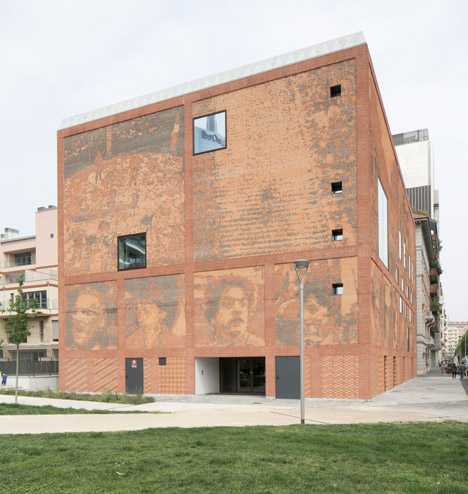
Designed by Milan-based studio Baukuh, the House of Memory contains cultural facilities and an archive.
It also houses the headquarters of five institutions that exist to preserve and promote the history of civil rights and democracy in Italy.
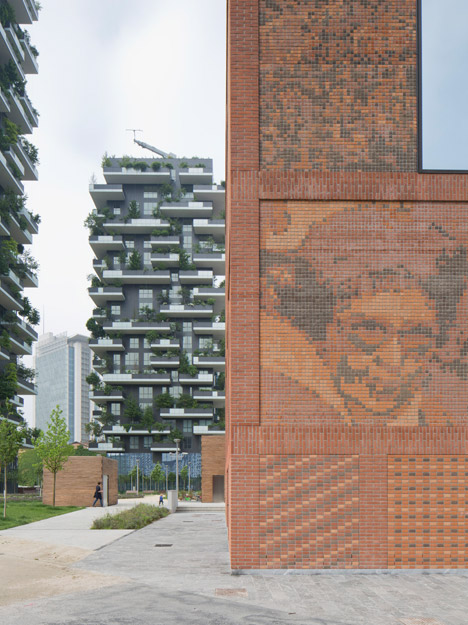
The architects won a competition to design the building for a site on the periphery of the city's developing Porta Nuova district, next to to Stefano Boeri's Vertical Forest towers. It was designed to mediate between these new towers, existing 19th century structures and a nearby park.
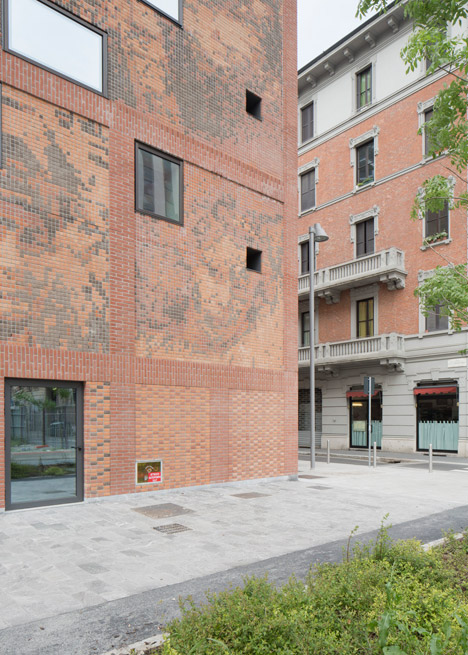
"At the fringe of an entirely new part of the city, the House of Memory maintains a relationship with the area's artisanal and industrial traditions," said the project team.
"In this respect, the building's rough appearance – just a box with few windows – and the proud sobriety of its construction materials establish a deep and precise connection with the industrial tradition of the Isola neighbourhood."
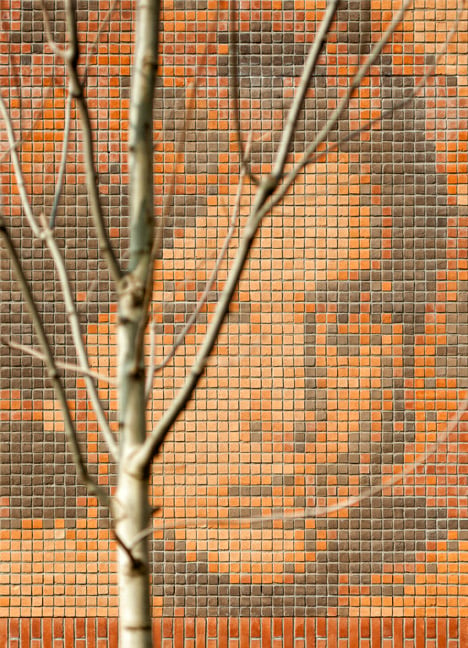
The building's exterior is clad entirely in brick, punctuated by a limited number of openings.
Brick pilasters and architraves enclose slightly recessed panels decorated with 19 portraits and eight historical scenes. These were based on images from the archives housed in the building and are composed of six different tones of brick.
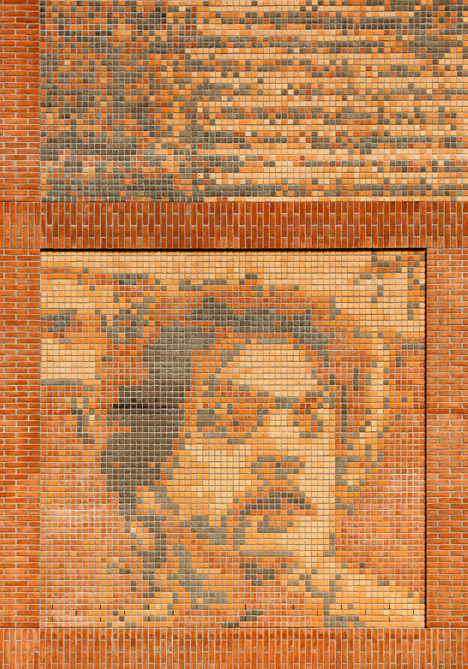
The portraits of anonymous Milanese citizens were chosen to represent the city's ethnically diverse population, while the other images depict significant moments in the city's recent history, including the deportation of civilians to concentration camps and the liberation from Nazi fascism.
"The shell of the new building is understood as a contemporary polyptych: this collection of images tries to suggest with great immediacy both the complexity and the ideal unity of Milan's collective memory," Baukuh said.
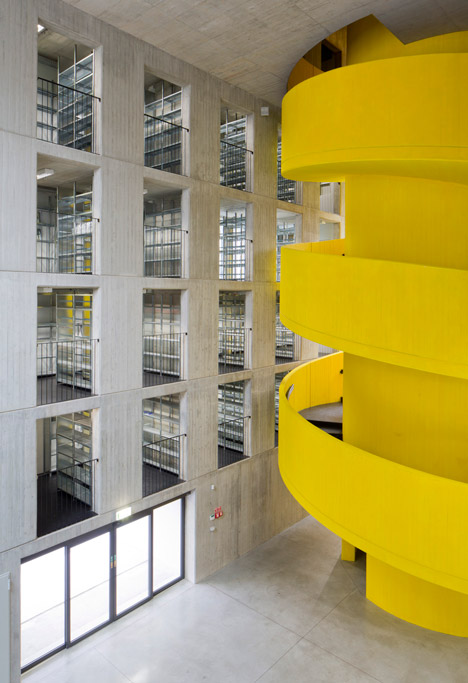
Internally, the building's simple form creates flexible spaces that are adapted to the varying needs of the institutions housed across its upper storeys.
An open ground floor provides a multipurpose space that is subdivided into three parts by a pair of octagonal columns. At one end, a full-height space incorporates a bright yellow spiral staircase that ascends to reach the three floors of offices.
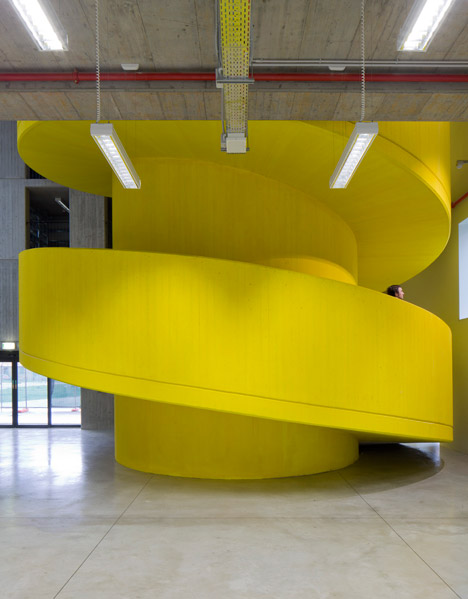
At one end of the building is the archive, with its rows of shelves visible through rectangular openings in a concrete wall that ascends over five storeys.
Restrooms and technical facilities are accommodated in a similar narrow space at the opposite end of the building.
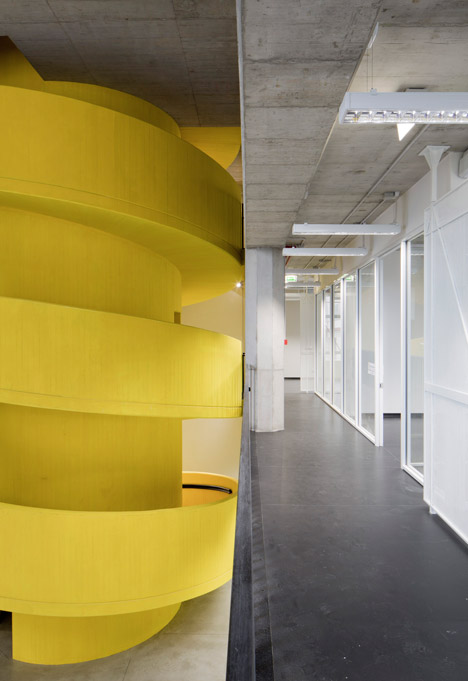
The reinforced concrete staircase connecting the ground floor with the offices above provides intermittent views of the archives to visitors as they follow its path.
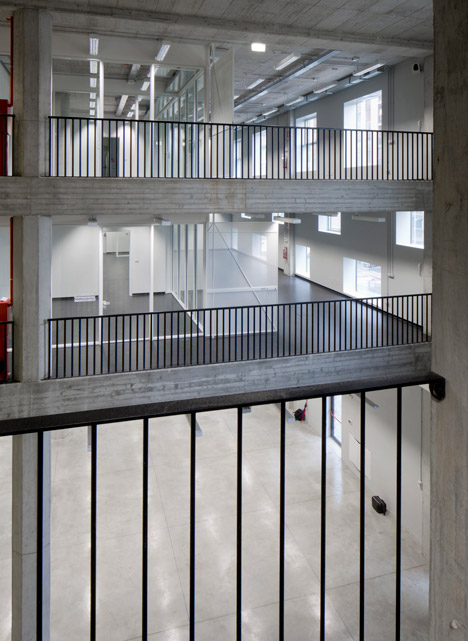
"The yellow staircase is not only the building's main distributive element, it is also the device that establishes a relation among the visitors and the collection," said the architects.
"Given that the preciousness of the archive does not allow the visitors to directly access the documents, the relationship between the citizens and the collection is established through the rotating movement created by the staircase."
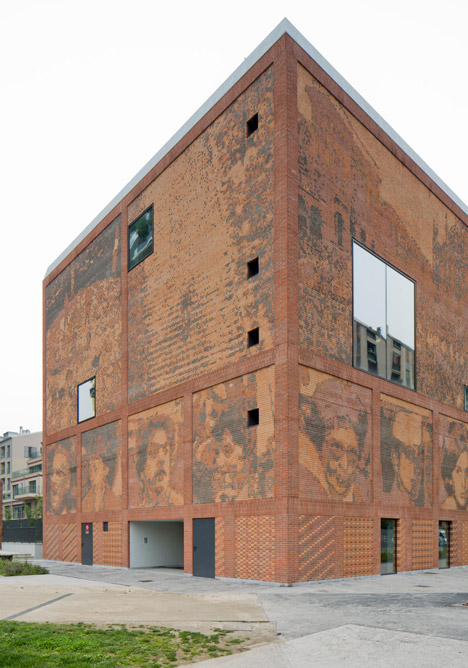
Glass partitions were also included where possible, allowing daylight that enters through the windows to permeate deep into the building.
Photography is by Stefano Graziani.